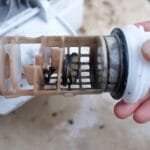Echo hedge trimmers are known for their reliability and efficiency. But even the best tools can face issues.
If you own an Echo hedge trimmer, you may have encountered some problems. These issues can range from simple fixes to more complex ones. Understanding these common problems can save time and frustration. Whether it’s starting issues, engine troubles, or cutting performance, knowing what to look for helps.
This blog will guide you through the most frequent Echo hedge trimmer problems. We’ll provide tips to troubleshoot and resolve them. By the end, you’ll feel more confident about maintaining your trimmer. Let’s dive in and ensure your Echo hedge trimmer works smoothly.
Common Engine Issues
Maintaining an Echo hedge trimmer is crucial for its longevity and performance. Despite regular upkeep, you might encounter some common engine issues. These problems can disrupt your gardening tasks. Understanding them can help you fix them quickly and get back to work.
Engine Won’t Start
One common issue with Echo hedge trimmers is the engine not starting. Here are some potential causes:
- Empty fuel tank: Ensure the tank is full of fresh fuel.
- Clogged fuel filter: Replace the filter if it’s dirty.
- Faulty spark plug: Check the spark plug for damage or carbon build-up. Replace if necessary.
If the engine still won’t start, inspect the carburetor. It might need cleaning or adjustment. Always use fresh fuel. Old fuel can cause starting problems.
Engine Stalls During Use
The engine stalling during use can be frustrating. This can happen due to several reasons:
| Possible Cause | Solution |
|---|---|
| Clogged air filter | Clean or replace the air filter. |
| Old or contaminated fuel | Drain the old fuel and refill with fresh fuel. |
| Carburetor issues | Inspect the carburetor. Clean or adjust if needed. |
| Overheating | Allow the engine to cool down. Check for obstructions. |
Regular maintenance can prevent these issues. Always check filters, fuel, and spark plugs. Keeping your Echo hedge trimmer in good condition ensures smooth operation.
Credit: www.lawnsite.com
Fuel System Problems
Echo hedge trimmers are known for their efficiency. But even the best tools can have issues. One common problem area is the fuel system. Proper fuel delivery is crucial for performance. Issues in this system can cause the trimmer to run poorly or not start at all. Two main problems arise here: a clogged fuel filter and an incorrect fuel mixture.
Clogged Fuel Filter
A clogged fuel filter can disrupt fuel flow. This blockage prevents the engine from getting enough fuel. Symptoms include difficulty starting the trimmer or it stopping suddenly.
- Check the fuel filter regularly.
- Replace it if it looks dirty or clogged.
- Use clean, fresh fuel to avoid debris.
Replacing a clogged filter is simple. Locate the filter in the fuel line. Remove the old filter and install a new one. Always use the correct filter for your model.
Incorrect Fuel Mixture
Using the incorrect fuel mixture can lead to engine problems. Echo trimmers require a specific mix of gas and oil. A common mix ratio is 50:1. This means 50 parts gasoline to 1 part oil.
- Use fresh, unleaded gasoline.
- Mix with high-quality 2-stroke engine oil.
- Follow the recommended ratio strictly.
An incorrect mixture can cause the engine to overheat or smoke. It may also lead to poor performance or engine damage. Always measure your fuel and oil carefully to maintain the correct ratio.
Avoid using old or dirty fuel. This can cause the mixture to be off. Store your fuel in a clean, airtight container to keep it fresh.
Blade Performance
The performance of the blade in your Echo hedge trimmer is crucial. A well-maintained blade ensures smooth and efficient cutting. If your blade is not performing well, it can lead to problems. These problems can make your trimming tasks difficult and time-consuming. Let’s explore some common issues related to blade performance.
Dull Blades
Dull blades are a common issue with hedge trimmers. They can make cutting difficult and inefficient. Here are some signs that your blades might be dull:
- The trimmer struggles to cut through branches.
- The blades leave ragged edges on the hedges.
- You notice the trimmer working harder than usual.
To fix dull blades, you can sharpen them using a file or a sharpening tool. Ensure you follow the manufacturer’s instructions for best results. Regular sharpening can help maintain the efficiency of your trimmer.
Uneven Cutting
Uneven cutting is another common problem. It can result from several factors:
- Misaligned blades
- Blades with nicks or dents
- Improper blade tension
To address uneven cutting, inspect the blades for any visible damage. If you find nicks or dents, you may need to replace the blades. Check the blade tension and adjust it according to the user manual. Proper alignment and tension ensure smooth and even cuts.
Maintaining blade performance is essential for efficient trimming. Regular inspection and maintenance can help avoid problems and extend the life of your Echo hedge trimmer.

Credit: www.youtube.com
Starting Mechanism Troubles
Starting your Echo hedge trimmer can sometimes be a hassle. Many users face challenges with the starting mechanism. These issues can be frustrating. Let’s explore some common problems and their solutions.
Recoil Starter Issues
The recoil starter can often be the root of the problem. Check if the pull cord is stuck. A jammed cord can prevent the engine from starting. Inspect the recoil spring. A damaged spring won’t recoil the cord properly. If the cord is frayed, replace it. A worn-out cord can snap, causing more issues.
Spark Plug Problems
The spark plug plays a crucial role in starting your trimmer. Remove and inspect the spark plug. If it’s dirty or fouled, clean it. A clean spark plug ensures a good spark. Check the spark plug gap. An incorrect gap can prevent the engine from starting. Replace the spark plug if it’s damaged. A new spark plug can often resolve starting issues.
Overheating Concerns
Overheating is a common problem with Echo hedge trimmers. It can damage the motor and other components. Understanding the causes of overheating can help you prevent it. Here are some common reasons your Echo hedge trimmer might overheat.
Blocked Air Filter
A blocked air filter can cause your hedge trimmer to overheat. The air filter keeps dirt and debris out of the engine. If it gets clogged, the engine can’t cool properly. This leads to overheating.
To check the air filter, remove it from the trimmer. Inspect it for dirt or damage. Clean or replace it if needed.
- Remove the air filter cover.
- Take out the air filter.
- Inspect the filter for dirt or damage.
- Clean with soapy water or replace if damaged.
Cooling System Faults
The cooling system is crucial for preventing overheating. It includes the cooling fins and the fan. If these parts are dirty or broken, your trimmer can overheat.
Check the cooling fins and fan regularly. Clean them to ensure proper airflow. Replace any damaged parts to keep the cooling system working.
| Component | Action |
|---|---|
| Cooling Fins | Clean with a brush or compressed air |
| Fan | Inspect and replace if broken |
Regular maintenance can prevent most overheating issues. Keep an eye on the air filter and cooling system. This will help your Echo hedge trimmer run smoothly.
Vibration And Noise
One of the common issues with Echo hedge trimmers is vibration and noise. These problems can make the tool uncomfortable to use. They can also lead to damage over time. Understanding the causes can help you fix the issue.
Loose Parts
Loose parts can cause excessive vibration in your hedge trimmer. Regularly check all screws and bolts. Make sure they are tightened properly. A loose part can also create a lot of noise. This simple check can save you from bigger issues later.
| Loose Part | Potential Problem |
|---|---|
| Screws | Increased vibration |
| Bolts | Unusual noise |
| Blades | Performance issues |
Worn Out Bearings
Bearings play a crucial role in the smooth operation of your hedge trimmer. Worn out bearings can cause both vibration and noise. Check the bearings regularly. Replace them if they look worn out.
- Inspect bearings every few months
- Listen for unusual noises
- Replace damaged bearings immediately
Regular maintenance can keep your Echo hedge trimmer running smoothly. This will reduce both vibration and noise.
Electrical Component Failures
Electrical component failures are a common issue in Echo hedge trimmers. These problems can cause the trimmer to stop working or perform poorly. Identifying and fixing these electrical issues can extend the lifespan of your trimmer. Understanding the common electrical problems can save you time and money.
Faulty Ignition Coil
A faulty ignition coil is a frequent problem in Echo hedge trimmers. The ignition coil creates the spark needed to start the engine. If it fails, the engine won’t start or may run poorly. Testing the ignition coil can confirm if it needs replacing. Always follow the manufacturer’s instructions for testing and replacement.
Battery Issues
Battery issues can also affect the performance of your Echo hedge trimmer. A weak or dead battery can prevent the trimmer from starting. Check the battery connections regularly. Ensure they are clean and secure. Charge the battery fully before use. Replace the battery if it no longer holds a charge.
Maintenance Tips
Maintaining your Echo Hedge Trimmer ensures it performs efficiently and lasts longer. Regular maintenance can prevent common problems. Follow these tips to keep your trimmer in top shape.
Regular Cleaning
Regular cleaning keeps your Echo Hedge Trimmer running smoothly. After each use, remove debris from the blades and housing. Use a brush or cloth to clear away any dirt.
Check for sap buildup on the blades. Sap can cause blades to stick. Use a soft cloth with soapy water to clean it off. Ensure the trimmer is off and unplugged before cleaning.
Inspect the air filter regularly. A dirty air filter can reduce performance. Clean or replace the air filter as needed. Follow the manufacturer’s instructions for the best results.
Periodic Blade Sharpening
Sharpening the blades ensures clean cuts and reduces strain on the motor. Dull blades can tear branches and cause uneven trimming.
Sharpen the blades every 20-30 hours of use. Use a sharpening stone or file. Hold the blade at a 45-degree angle. Sharpen in one direction to maintain the blade’s edge.
Check for nicks or damage on the blades. Replace any damaged blades to avoid further problems. Regular sharpening extends the life of your trimmer and improves performance.
Credit: www.tiktok.com
Frequently Asked Questions
Why Won’t My Echo Hedge Trimmer Start?
Check the spark plug, fuel levels, and air filter. Clean or replace them if dirty or worn out.
How Do I Fix Echo Hedge Trimmer Not Cutting Well?
Sharpen the blades and ensure they are clean. Check for any obstructions or damage to the blades.
Why Does My Echo Hedge Trimmer Keep Stalling?
This could be due to clogged fuel lines or a dirty carburetor. Clean them to fix the issue.
How To Maintain Echo Hedge Trimmer Blades?
Clean the blades after each use. Regularly oil them and check for any damage or wear.
What Fuel Should I Use In My Echo Hedge Trimmer?
Use a mix of unleaded gasoline and 2-stroke engine oil. Refer to the manual for the correct ratio.
Conclusion
Experiencing problems with your Echo hedge trimmer can be frustrating. Regular maintenance helps avoid many issues. Clean blades and check fuel regularly. Always use fresh, high-quality fuel. Replace spark plugs as needed. Follow safety guidelines to prevent accidents. Understanding these simple tips can keep your Echo hedge trimmer running smoothly.
Don’t ignore small problems; fix them quickly. Enjoy a well-maintained garden with less hassle.




